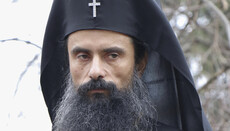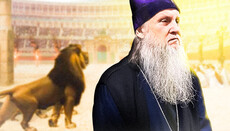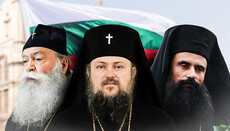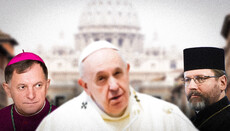Tomos of schism: On anniversary of the “Unification Council” of OCU
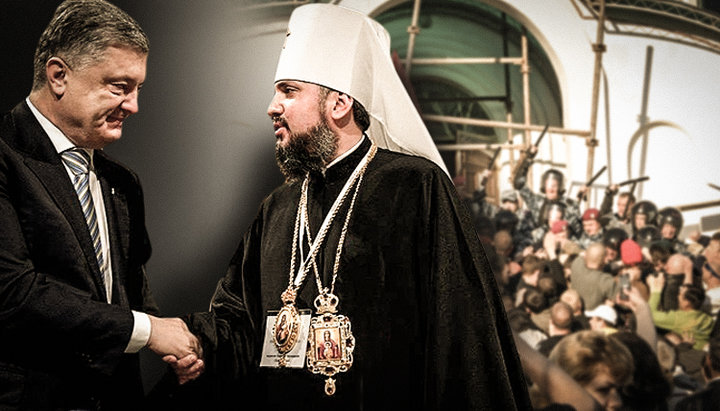
In 2018, the "Unification Council" of the OCU was held. Whom did this "church" actually unite and to what extent did the Tomos fulfill its function?
On December 15, 2020, members of the OCU celebrated their anniversary – two years since the creation of this structure. Its head Sergei (Epiphany) Dumenko said very interesting words in the St. Sophia Cahedral: "Patriarch Bartholomew and the Phanar Synod made a truly historic decision two years ago, which changed the course of history not only of Ukrainian Orthodoxy but, I am sure, will change the course of the history of all Orthodoxy in the future. Because the future of the entire Orthodoxy depends on our Church – whether there will be peace or not in the Orthodox Church.”
Sergei Dumenko made a lot of untrue statements during his "primatial ministry", but these words of his got right to the point – World Orthodoxy, in which relative harmony and peace reigned until 2018, with the advent of the OCU, completely lost this peace. Moreover, the Ecumenical Church is going through an obvious crisis, which is already being compared with the Great Schism of 1054, when the Roman Church broke away from Orthodoxy. Therefore, saying that “it depends on the OCU whether there will be peace in the Orthodox Church,” Sergei Dumenko is absolutely right. Right with a minor caveat – it was the OCU that has already destroyed this peace. Nobody knows what the Orthodox Church will be like tomorrow.
Let's trace how it all began two years ago.
Tomos and "unity": hierarchs
In order to justify their canonical lawlessness on the territory and to legalize Ukrainian schismatics in the "autocephalous church of Ukraine", canonical bishops, i.e. hierarchs of the Ukrainian Orthodox Church, had to be involved. Indeed, it would be possible to formally explain to other Local Orthodox Churches why Phanar invades the canonical territory of the Russian Church if the canonical UOC entered into an alliance with the schismatics in the desire to receive the Tomos.
Of course, Phanar understood that the majority, out of almost a hundred at that time bishops of the canonical Church, would not agree to any political compromises with Filaret Denisenko and Makariy Maletich.
It would be possible to explain to other Local Orthodox Churches why Phanar invades the canonical territory of the Russian Church only if the canonical UOC entered into an alliance with the schismatics in the desire to receive the Tomos.
The initiators of the Tomos from Ukraine – Poroshenko, Parubiy, Yurash and others – also understood this. Therefore, they hoped that it would be possible to coax about two or three dozen bishops of the UOC into an alliance with the UOC-KP and the UAOC.
On November 13, 2018, a month before the "unification council" was held, the then Metropolitan of the UOC Simeon (Shostatsky) announced that he had confidential signatures of 15 bishops of the UOC, who were positive about the "autocephalous" process and ready to join the new structure created by Phanar.
Approximately the same figures were announced to Patriarch Bartholomew. So in August 2018, during a meeting with Patriarch Kirill, the head of Phanar claimed that at least 25 bishops of the UOC would join his new "church". In turn, some clerics of the UOC fueled the situation from within, and in interviews with various publications said that “they are already beginning to commemorate the Patriarch of Constantinople at their service”, “the bishops of the UOC are divided into groups and there is no more unity”. Also, according to them, similar sentiments were hovering among the brethren of large monasteries: “The position of the brethren does not coincide with the opinion of the abbots. The position of the head of the UOC-MP does not coincide with the position of the episcopate."
And so, when on December 15, 2018, not twenty-five (as Patriarch Bartholomew had anticipated), not fifteen (as Metropolitan Simeon had said), but only two bishops of the UOC (and only one of them is ruling) arrived at the so-called "Unification Council" – this came as mind-boggling to the Phanariots. After all, it turns out that all of their so carefully built ideology, according to which the Tomos will finally unite ALL "branches" of Ukrainian Orthodoxy, collapsed in one moment.
Of course, even if we assume that a quarter of the episcopate of the UOC had actually opted for the OCU, such a thesis would still be false, because in a situation where the lion's share of the hierarchs chose to remain with their Primate, one cannot speak of any kind of union. Moreover, when only two joined the split, the question arises – how can such a "union" be seriously discussed?
Therefore, the words of Epiphany Dumenko, pronounced in 2019 that “on December 15, we all together were able to witness the fact of the unity of the three branches of Ukrainian Orthodoxy” are not perceived otherwise than mockery.
“Transitions” of communities
True though, back in 2018, representatives of the already created OCU still hoped that despite such a unanimous rejection of the newly created structure by the episcopate of the UOC, ordinary believers would have a different stance on this matter.
Indeed, then a kind of euphoria reigned among the supporters of the Tomos. It seemed to them that the very fact of the granting of this document guaranteed the collapse of the UOC and mass migration of the episcopate, clergy and believers into the new church structure created by Phanar.
Here is what Metropolitan Simeon of Vinnytsia said: “When the Tomos is granted, Ukrainian parishes will move to a new church. This process will be especially intensified when a law is adopted that regulates the nuances of subordination of parishes. People must decide for themselves: are they in the Ukrainian autocephalous church or are they in the Russian Church?" In November 2018, he said in all seriousness that "the inhabitants of the villages of the Vinnytsia region are supporters of autocephaly, while the residents of Vinnytsia are for the ‘Russian world’."
In 2018, a kind of euphoria reigned among the supporters of the Tomos. It seemed to them that the very fact of the granting of this document guaranteed the collapse of the UOC and mass migration of the episcopate, clergy and believers into the new church structure created by Phanar.
“Patriarch” of the UOC-KP Filaret Denisenko was then sure that due to pressure from the parishes, most of the bishops of the UOC would move to the OCU: “According to our calculations, up to two-thirds of the episcopate is ready to get to a single church. They will be stimulated by the fact that the MP parishes themselves will begin to move there. So the bishops can be left without parishes and will have no choice but to follow their flock."
Indeed, a month after the "unification council" the picture outlined by Filaret seemed to begin to come true, at least in terms of the "transitions of believers". Another question is how these "transitions" took place. In January, representatives of the OCU managed to take away by force 243 parishes from the UOC – in fact, 10 shrines a day. In February this figure was 153 parishes – less than in January, but still a lot. It seemed that if this dynamic continued, then by the end of 2019 the Ukrainian Orthodox Church could lose from a quarter to half of its parishes.
In May 2019, Epiphany was still hoping for mass transitions of the UOC communities to the OCU. However, nothing of the sort happened, and 150 churches were “transferred” to the OCU within 10 months over 2019 (from March to December). Moreover, most of the "transitions" happened with the direct complicity of the old government and President Poroshenko. And as soon as the political situation changed, the “transitions” themselves almost stopped, which is why in September 2020 Dumenko complained that the “transitions” had stopped under the new government.
Moreover, the same Shostatsky, who before the “unification council” claimed the support of the OCU from the rural parishes in the Vinnytsia region, in June 2019 said that he had lost a lot: “I used to run 320 parishes, now I have 20; I used to have 280 priests, but there are only 30." Therefore, even in the diocese where the ruling bishop, who before the transition enjoyed authority and respect among believers, joined the OCU, the parishes refused to enter into an alliance with the schismatics. With respect, Metropolitan Simeon (Shostatsky) also lost his diocese ...
“I have lost a lot. I used to run 320 parishes, now I have 20; I used to have 280 priests, but there are only 30"
Ex-Metropolitan of the UOC Simeon (Shostatsky)
The former Metropolitan of the UOC Alexander Drabinko also gained nothing from the transition to the OCU. Although he received the status of "ruling bishop" in the OCU, in reality he does not have any diocese. At the moment, he has to devote most of his time to “making an appearance” – the former metropolitan travels to the “dioceses” of his new “fellow bishops”, takes pictures with them and gives interviews to various publications, the rank of which is decreasing each time. At the moment, the future of Drabinko within the OCU does not look rosy, because none of the former representatives of the UOC-KP or the UAOC will ever let him have his "diocese", and he is likely to count on nothing more than a few churches.
Falsehood and violence
Eventually, the creators and initiators of the OCU were crushingly disappointed both in terms of the transition of communities from the UOC. They managed to take away only about 500 temples from the canonical Church which numbers more than 12,000 communities. Let us emphasize that in the overwhelming majority of cases the communities of the canonical Church remained faithful to Orthodoxy, even if they lost their church.
At the same time, in recent months, we have witnessed the violence outright lies the supporters of the OCU resorted to during the seizure of Orthodox churches.
For examples, in the village of Zadubrivka, Chernivtsi region, representatives of the newly created structure severely bashed the believers of the UOC – they beat them with a knife and truncheons so that the latter ended up in a hospital, and one of them required eye surgery.
More recently, on December 12, i.e. three days before the second anniversary of the "unification council", which was supposed to "unite" Ukrainian Orthodox Christians, several dozen OCU "believers", armed with clubs, bats and knuckle dusters in the village of Mykhalcha, Chernivtsi region, tried to take the church away from the UOC believers, barbarously smashing the door of an Orthodox church with sledgehammers.
In the village of Buzhanka, Cherkasy region, the “transfer” of the community to the OCU was accompanied by falsification of documents; currently two criminal proceedings have been opened on this issue.
UOC and OCU: facts
Do we hear similar news about supporters of the Ukrainian Orthodox Church? No, we don’t. Do the faithful of the UOC come with brass knuckles and clubs to “transfer” the temples of the OCU to the canonical Church? No, they don't. They don't even take away their own churches with fittings in their hands. Being true Christians, they use the reinforcement for its intended purpose: with its help they strengthen the foundations of new churches instead of the grabbed ones. Almost every week we hear news that the UOC community has built a temple in a particular locality instead of the one taken away by OCU. In Transcarpathia, Volynia, Bukovina, in the Ternopil region and in many other places, we see that the believers of the canonical Church act like real Christians: after the church is taken away from them, they do not take brass knuckles to fight their offenders, but take shovels; they do not go to punish their offenders, but go to build a new temple.
Quite recently, a film was released about real Christians in the neighboring villages of Butyn and Kynakhivtsy, where the "men of prayer" from the UOC-KP (now the OCU) consecutively took away two churches from believers – first in one village, then – in the other. What did the community members do? At first, they prayed in the headman's house, then they built a small church out of chipboard, and then, with the help of benefactors, they built a new beautiful church. But even this is not the main point. Those worshipers did not get embittered in the slightest. Their love for God, for each other, and even for offenders only grew stronger.
And the community of Orthodox Christians does not disappear along with the church as a result of the “transition": people continue to pray, gather in their homes, priests serve the Liturgy, and despite all the problems, the community lives a full-fledged spiritual life.
Believers of the UOC use reinforcement for the intended purpose: with its help they strengthen the foundations of new churches to replace the seized ones.
That is why, at the end of 2020, the UOC showed positive growth in almost all indicators: there emerged another 36 new communities, 45 priests, and another new monastery. Now, taking into account the temples that were seized by force, the Ukrainian Orthodox Church numbers 12,374 communities, 12,546 priests, 255 monasteries, and 4,548 monks. Is this not evidence of who our people are with?
At the same time, despite all Dumenko’s narrative, we do not see any noticeable growth in its structure. It is interesting to compare the numbers he announced on December 15, 2020 and December 14, 2019.
According to them, the OCU has "more than 7000 parishes" (in the same way, "more than 7000", without specific numbers, it had last year), "more than 4500 clergy" (exactly the same figures were sounded in 2019), "about 80 monasteries "(in 2019 a more specific figure was sounded - 77 monasteries, this year, apparently, they decided to round it off), and 60" bishops "(instead of 62 in 2019).
Why does Dumenko name approximate numbers of parishes and priests? Because, firstly, they cannot be counted, since many of them are still under the jurisdiction of the UOC-KP.
Secondly, no one can say for sure how many parishes will remain in the OCU even before the end of this year, and not only in the more distant future. But it is still possible to count the "bishops", and it turns out that there are two fewer of them than in 2019.
We are talking about “bishop” Filaret Panku, who was expelled from the OCU, and the deceased “bishop” Ioann Boychuk. Interestingly, in this regard, he did not commemorate Denisenko but only mentioned the fact during the "prayer service" in St. Sophia of Kyiv that Filaret "fell into temptation and he is not among us."
But the allusion to "temptation" in no way justifies the fact that the Tomos not only failed to unite the Orthodox of Ukraine, but divided even the OCU itself and those Local Churches, whose primates recognized it and thus split World Orthodoxy.
Tomos and the issue of US national security
Suffice it to recall here that the "recognition" of the Tomos did not take place due to ecclesiastic rationale, canonical validity or other arguments understandable to the Orthodox consciousness, but solely through political pressure and direct participation of the Greek and Cypriot authorities, acting at the behest of the US State Department.
For example, on December 9, 2020, US Ambassador to Athens Jeffrey Payette said that "Greece and the United States work as strategic partners to respond to the challenge that Russia poses to our democratic values and specifically to the freedom of religious expression here in Europe."
In his understanding, the United States should defend not religious freedoms in general, but the Patriarchate of Constantinople in particular: " Not only does Russia challenge the authority of the Ecumenical Patriarch, but it has continued seeking to break the unity of the Orthodox Church by fomenting instability and undermining the sovereignty of independent Orthodox-majority nations." At the same time, Payette directly says that the whole “challenge” of Russia lies in the rejection of the OCU by the Russian Orthodox Church: “Last year, when the Ecumenical Patriarch granted autocephaly to the OCU according to the wishes of the Ukrainian people, Russia responded by breaking ties with His All Holiness. The Russian Orthodox Church then proceeded to cut ties or threatened to cut ties with other churches that have followed the Ecumenical Patriarch’s lead."
However, the American official is confident that the group of those who recognize the OCU will surely grow, because Phanar's support is "a matter of US national security." In this regard, I would like to ask the representatives of the OCU about whether they are not ashamed to associate all their hopes for the future with the "issue of US national security"? How do the “believers” feel when they know that their “church” can be recognized only because of the pressure from the State Department and the American secret services? And what does all this have to do with the personal salvation of the soul of a particular person? Is the State Department also going to give its valuable recommendations at the Last Judgment?
But the most interesting thing is that even with such a powerful pressure in the Churches, whose primates have recognized the OCU, there are a huge number of hierarchs, priests and believers who do not want to enter into unity with schismatics.
Even amid such powerful pressure in the Churches, whose primates have recognized the OCU, there is a huge number of hierarchs, priests and believers who do not want to enter into unity with schismatics.
The entire Orthodox world has recently witnessed how almost half of the Synod of the Cypriot Orthodox Church refused to consider the religious structure touted in Ukraine as canonical. Some bishops of this Church announced that they would not concede to their primate if he continued to commemorate Dumenko as “Metropolitan of Kyiv”. The picture is similar not only there, but also in the Greek Church. For example, Archpriest Nikolai Danilevich said that a number of priests of this Church “either refuse under various pretexts from concelebrating when they are invited to the holidays, or they come and pray at the altar, don’t put on vestments, so as not to concelebrate and not to receive the Holy Communion with the schismatics and those who partake of the Holy Gifts with them."
Who did Tomos "unite" then?
What do we end up with? The Tomos of the OCU could not solve the problem of dividing the Orthodox "branches" of Ukraine and uniting all believers into one structure to enjoy the communion with World Orthodoxy (what Phanar declared when the OCU was created). Moreover, it not only failed to fulfill its task in Ukraine, but also became a stumbling block in the Local Churches worldwide.
Metropolitan Seraphim of Piraeus, responding to the statements of the Athos monk Nikita, who asserts that the Tomos is “the greatest ecclesiastical event of recent decades”, writes that “not only can Ukrainian autocephaly not be considered ‘the greatest church event in recent decades’, but quite the opposite – it was the most tragic ecclesiastical event of recent decades.”
Not only can Ukrainian autocephaly not be considered "the greatest ecclesiastical event of recent decades," but quite the opposite – it was the most tragic ecclesiastical event of recent decades.
Metropolitan Seraphim of Piraeus
According to him, instead of peace and unity, the Tomos unleashed "an unprecedented persecution of the canonical Orthodox Church under the omophorion of Metropolitan Onuphry": the hierarchy, priests, monastics and believers of the Ukrainian Orthodox Church are exposed to beatings, monasteries and temples are forcefully seized, while the communities of the canonical Church are persecuted, made to change the name for ‘Russian Church’ and faced up to unprecedented pressure." The bishop is sure that Tomos did not help even those who supported it in Ukraine, because “people who persecute, rob, resort to violence are not on the path of salvation, but on the path of destruction”.
And probably it is Metropolitan Seraphim of Piraeus who makes the best conclusion regarding everything that has happened over the past two years in Ukraine and Orthodoxy: “The Ecumenical Patriarchate tried with the help of Ukrainian autocephaly to lead (allegedly) a handful of people, an insignificant minority of the Ukrainians, onto the ‘path of salvation’. But what did he achieve in the end? He failed to lead them to the "path of salvation", but at the same time created a pan-Orthodox schism. Was this an ‘achievement’ of the Ecumenical Patriarchate? Does it really mean to be on the "path of salvation"? "
Is all the above actually the "path of salvation" in the vision of Phanariotes?
